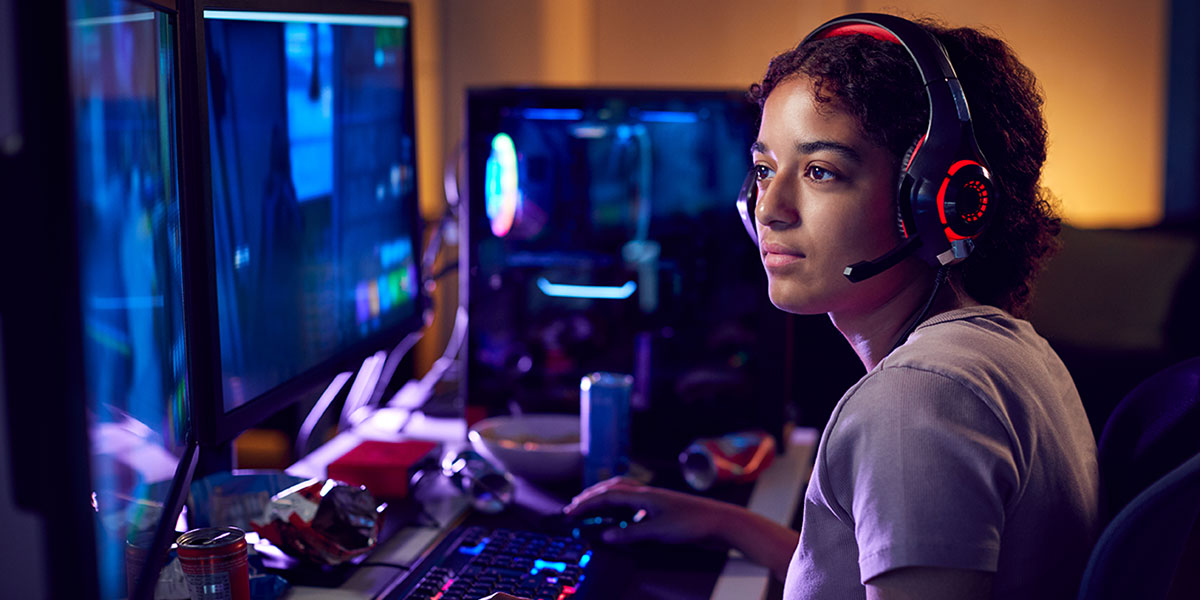iT1 Resources
Before You Build an Esports Infrastructure in Your School

Bringing esports into education is no easy feat. To make the most out of a program there are a few things required before the big purchase. This article will discuss the considerations that need to be made before jumping feet first in getting quotes for gaming PC’s and all the additional components.
Goal-Setting – What do I want esports to look like at my school?
Esports can look like many things. It is up to each school to define it. Is the goal to get students a state championship? Is the goal to help funnel students into college esports programs? Is the goal to increase team based communication? Is the goal to allow students a reward for their efforts throughout the day? Is the goal to adjust teaching and learning styles to the 21st century? See what I mean.
Bringing video games and gaming into a school takes on many opportunities. By looking at the outcomes of the program a school or district can better determine how a program is structured and what games to consider.
Games – What games should students play at my school?
Esports can be framed by grade level or it can be blended. Deciding how to structure the competitive play is important. Although high schools and colleges receive a lot of attention, middle schools and elementary schools can participate in competitive gaming with Minecraft: Education Edition or other school approved games. The type of game deemed acceptable by each school may dictate what type of outcomes you are looking toward.
Currently there are only 4 video game titles that are considered sporting activities recognized to receive a state championship in the high school levels from Play Vs, but there are far more games available to consider. Organizations like the High School Esports League have over 20 games for students to actively compete. Deciding what game(s) to play will dictate what type of systems to consider.
Systems – What gaming system is best for my school?
There are so many different ways to play video games. There are games designed for phones, some designed for tablets, and some are made specifically for individual consoles. The games and the goals will guide the system to be used. In the lower grades, Ipads and Chromebooks are prevalent. The reduced compute power makes them incapable of playing some of the more well known esports titles, but they do have the capacity to run Minecraft: Education Edition. In the higher grades for competition there are many different systems depending on the game/tournament, Nintendo Switch holds exclusive titles like Smash Bros. Other larger titles have PlayStation and Xbox versions of these. Unlike PlayStation, Xbox titles can be played on any Windows 10 PC after connecting and configuring the Xbox Live accounts.
There is no one size fits all in the world of esports. The decision on system should be centered around the competition and the goals of the school implementing gaming into their programs.
Additional Equipment – What do my students need to play?
Depending on your goals and your games and your system you may require some additional equipment. In order to play any of these games in a competitive online format, you must have internet access, a device (Xbox, PlayStation, Nintendo Switch, PC) to access the internet, and controller (keyboard/mouse). Once those needs are met students can participate. You can also include headsets for in game discussion. Many esports titles thrive on the communication in a round. Although they are not required for participation, adding headsets elevates traditional gameplay to bring in workforce development skills that may be involved in your goal setting phase. The above list is a reduction of all of the components that could go in to your decision for purchasing products. There are a lot of opinions around what is needed and what is best and those are often confused for the same thing. Depending on where you are in your gaming journey, the best may not be the most important.
Participating in Esports
So many people play video games and there are many different reasons to play. After selecting goals and games and getting all of your systems and equipment ready, it’s time to play. Allowing students to participate in esports brings a lot of opportunity to learn differently and engage in a new fashion. This is an excellent time to help create your school’s brand of video game engagement.
Guiding students through having discussions in a virtual format, making sure they are held to behavioral standards, and fostering kindness while communicating in round will bring more confidence to the decision to participate in this new activity.
ABOUT THE AUTHOR
Tyler Rising is a Senior Account Executuve at iT1. He connects schools and districts to the technology required to advance society and elevate the status quo with gaming and computer science.
<< Back to Resources